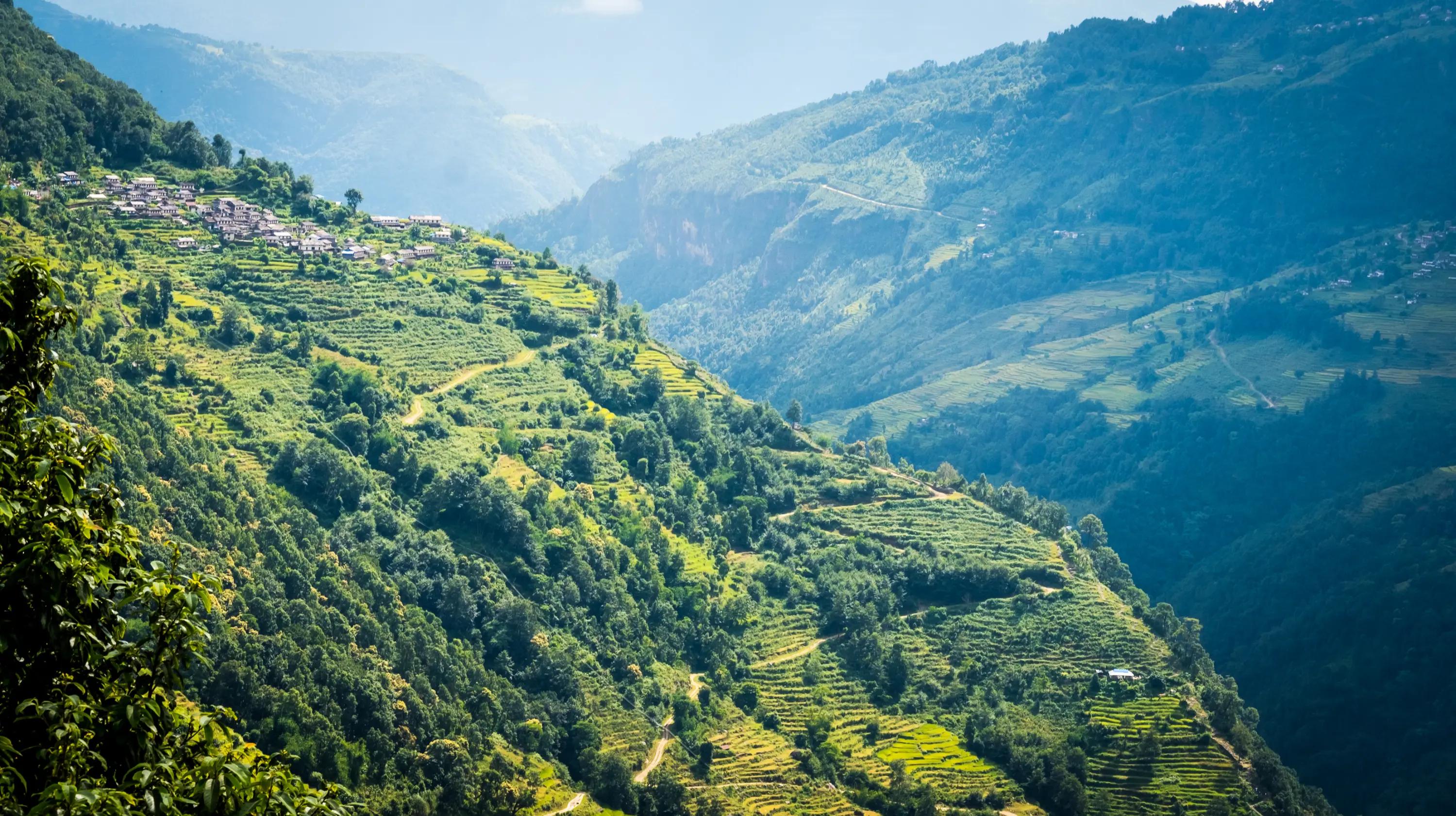
Nepal
Jane Wilson-Howarth
The roof of the world
Successful British writer Jane Wilson-Howarth has chosen to live in Nepal for several years now. A radical lifestyle choice, just as radical as the challenge that a land like Nepal poses to those who visit it. Despite the increase in high-altitude tourism, which has caused some mountaineering greats to cry scandal, the Nepalese peaks of the Himalayas still retain the allure of a destination not accessible to all. No fewer than 8 of the 14 peaks above 8,000 metres are in Nepal, rightly earning it the title of roof of the world.
However, from north to south, within a few hundred kilometres, Nepal has a difference in heightranging from 8848 metres on Everest to 80 metres at the country's lowest point. A country made of complexity and contrasts.
The territory
To the south of the Himalayan peaks lies a series of plateaus that descend in rapid progression towards the tropical plains of the Ganges. The landscapes come in breathtakingly varied succession, matched by the changing flora and fauna, which range from the red panda to the snow leopard and the Bengal monitor lizard.
The capital, Kathmandu, is a city with an ancient history that today is home to almost one and a half million people and gives its name to the valley that lies around it. Legend has it that once upon a time, in that valley there was a large lake, in the centre of which there was a lotus flower that attracted pilgrims from all over. Among these was Maha Manjusri, a Chinese sage who, on seeing the flower, decided that everyone should be able to admire it up close and with a blow of his sword tore open the side of the lake, making the water fall along the surrounding gorges and creating from the bed of that lake what is now the Kathmandu Valley.
Treedom in Nepal
Treedom's work in Nepal began in 2017, with the planting of 10,000 coffee trees with local mountain communities as its central pivot. These were accompanied by other fruit and forest species. Since then, the activity has expanded, but coffee remains one of the most planted species in Nepal, due in part to its key role in the local economy.
One of the most important project areas is located close to the rise of the highest Himalayan peaks, at an altitude of about 1,800 metres. We are in the Rasuwa district, in the Central Region of Nepal. It is an extremely suitable area for growing coffee, not only due to the potential yield of the plants, but also the quality of their fruits. Factors such as the soil, the temperature range and the intensity of the sun's rays make Nepali coffee among the finest in the world.
Facing the challenges
Experience has taught us that working in Nepal poses many challenges. Perhaps the biggest one is logistics. We move around and work in an area which in a few kilometres, as the crow flies, requires us to navigate height differences that turn what would be a normal trip elsewhere into an undertaking.
This is why we try to minimize the need for travel, and given that the main infrastructure we use consists of nurseries, in Nepal it's best to make them as close as possible to where the trees will be planted. Proximity nurseries can be smaller in size than nurseries built in other countries, but allow trees to be delivered to farming communities with greater ease.
126,767
trees planted in Nepal
6,467
beneficiaries involved in Nepal
